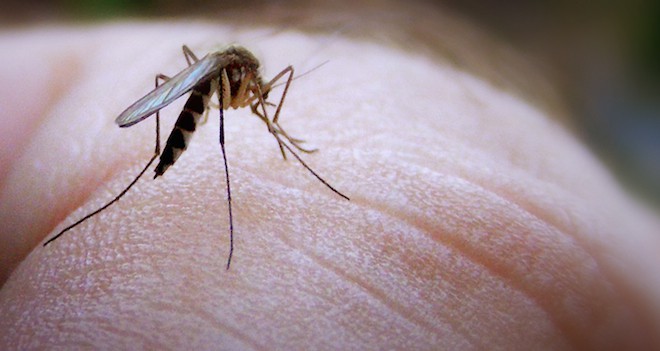
 James Jordan (CC), Flickr
James Jordan (CC), Flickr
Every once in a while a scientific paper pops up in my stream that makes me think, not Cool, or Ick, but: Wow, I had no idea. I’ve just read one, published last month in Pediatrics, which definitely falls into the last category. My extreme abbreviation of the findings: On average, more than 100 children and teens each year are made dangerously ill or paralyzed by infections carried by mosquitoes, and two die.
I think of mosquito-borne infections in the United States — that is, primarily West Nile virus, and the much less well-known La Crosse virus and Eastern equine encephalitis virus — as a problem of adults. I had no clue they were so dangerous to children. (And if I didn’t, most of you probably didn’t either.)
Here’s a more detailed breakdown.
The paper comes from researchers at the University of Colorado School of Medicine and the Center for Disease Control and Prevention’s Arboviral Diseases Branch, which is based in Colorado. It draws on data that state health departments sent to ArboNET, a CDC surveillance system for insect-borne diseases, between 2003 and 2012. Specifically, it examines the rates of illnesses caused by mosquitoes and ticks that occurred in people younger than 18 and that became “neuroinvasive”: that is, causing encephalitis (inflammation of the brain), meningitis (inflammation of the covering of the brain and spinal cord), paralysis, or death.
The numbers are startling — or, at least, they startled me. Over those 10 years, 1,217 children and teens developed meningitis or encephalitis from a mosquito-borne infection; 24 were paralyzed; and 22 died.
Some more detail about the main diseases responsible, which occur in different parts of the country at different levels of risk; across those 10 years:
There were 505 cases of neuroinvasive West Nile virus in children and teens, 14 cases of paralysis, and 3 deaths. That was a small fraction, just 4 percent, of the 13,108 neuroinvasive West Nile virus cases that occurred in the US; both West Nile and its most serious manifestations seem to be mostly an adult disease. The ill children were slightly more likely to be boys (61 percent of the total) and the median age of the victims was 12, though a third of them were 15-17. You probably think of a mosquito-borne disease as something that happens in tropical swampy areas, but these cases happened all across the US, in 41 states; the highest case counts were in Texas, California, Louisiana, Colorado, Arizona, Nebraska and South Dakota.
La Crosse virus, unlike West Nile, turns out to be a child’s disease, not an adult one. There were 754 neuroinvasive cases nationwide across the 10 years of the study, and 88 percent of them, 665, were in children and teens. Those included 10 cases of paralysis and 9 deaths. The sick kids were, again, more likely to be boys (62 percent), but the victim were younger overall, with a median age of 7. And the places where they were most at risk were quite different from West Nile. Though 21 states saw at least one case, 81 percent of the illnesses were concentrated in Ohio, West Virginia, North Carolina and Tennessee, and 56 percent of them in just 29 counties in those four states.
Eastern equine encephalitis was much more rare — just 89 cases overall across the 10 years, 30 (34 percent) of them in children and teens — and also much more coastal: 87 percent of the cases occurred in Florida, Massachusetts, Alabama, North Carolina, New Hampshire, Louisiana or Georgia. But when it occurred it was very serious: Ten of the 30 child victims died. They were equally likely to be boys or girls, and they were young: The median age was 5, and 6 of the 30 were less than a year old.
Speaking just out of my own reporting, I don’t think the average US resident takes mosquito-borne diseases very seriously. We have some justification for that: It’s been decades since we experienced locally established malaria, and longer than that for yellow fever; and dengue and chikungunya are such new arrivals that we haven’t yet learned to fear them. So it’s difficult to wrap our heads around the possibility — low though it might be statistically — that an insect bite in the back yard could cause your child to be altered for life, or to die.
But these data show it is possible. To me, they make an urgent case for clearing out any standing water, keeping an eye on where kids and teens go in wild areas or woods, and forcing them to wear insect repellent, though they will probably hate it. The cost of not paying attention could be far too high.
Cite: James T. Gaensbauer, Nicole P. Lindsey, Kevin Messacar, J. Erin Staples and Marc Fischer. “Neuroinvasive Arboviral Disease in the United States: 2003 to 2012.” Pediatrics 2014;134;e642; originally published online August 11, 2014; DOI: 10.1542/peds.2014-0498